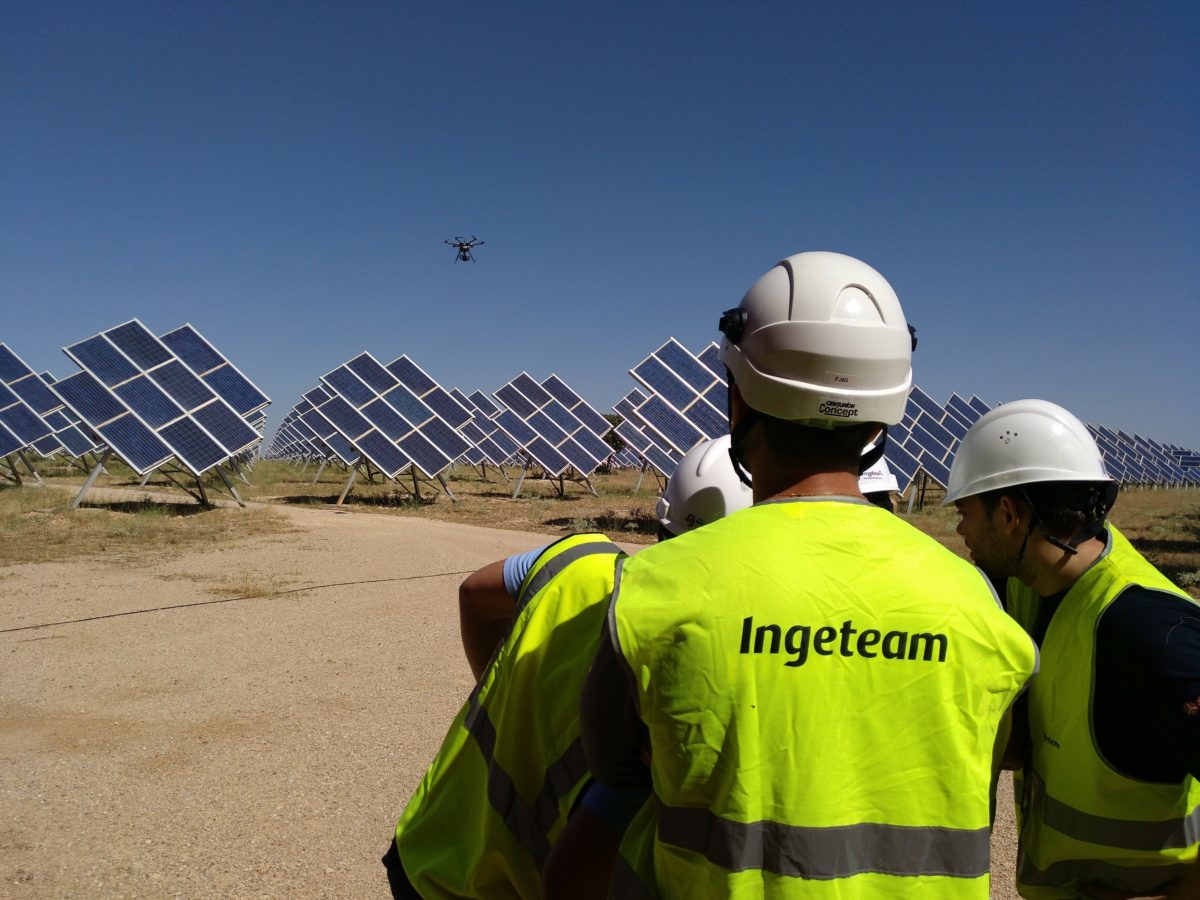While advances in PV power plant monitoring in recent years have been providing project owners and investors with a high level of granularity in terms of identifying the causes behind underperformance, there exists a large existing fleet in which problems can go unreported.
Spain’s Ingeteam is looking to address this challenge, in a new program which will deploy drones to inspect modules in situ. Drones equipped with thermographic cameras can pass over a PV array and detect thermal anomalies, indicating faulty modules or even cells.
Unusually elevated temperature in cells and modules can indicate cracked cells, poor cell interconnectivity, and hotspots. Thermal imaging may also show up module soiling or the build-up of dirt and dust on particular cells – itself a cause of damaging hotspots.
Faulty or badly soiled modules can be tagged with GPS and then either replaced on site or Operations and Maintenance (O&M) teams can attempt to remedy the fault.
As one of the first large scale solar markets globally to reach scale and therefore home to a large fleet of aging PV power plants, Spain itself is a good laboratory for implementing a drone inspection study.
Ingeteam indicates that its drones will be equipped with a number of sensors and use algorithms to automatically detect anomalies in the field. The company reports the SCARAB project hopes to make the use of sensors on drones more efficient, while optimizing the fault classification algorithms, and the process by which maintenance strategies are carried out.
Ingeteam will launch its first inspection drones in 2018.
While the Ingeteam program is focused on PV power plants, thermographic inspection of rooftop arrays can also be carried out. Hotspots can have more serious implications in rooftop arrays, where fires can occur.
Belgium thermographic equipment supplier FLIR has supplied drone-mounted cameras for rooftop inspections in Italy, where the equipment has been used to spot faults not only in modules, but also right across an array.
“You can use thermal imaging to inspect the entire system, from the solar panels themselves to connections, inverters, fuses and all other electrical components in the system,” said Italian thermographic inspector Alberto Ermoni. “If any part of the systems starts to wear down or develops a higher resistance for some other reason, the corresponding increase in temperature can be detected very easily with a thermal imaging camera, so you can fix the problem before the system fails.”
This content is protected by copyright and may not be reused. If you want to cooperate with us and would like to reuse some of our content, please contact: editors@pv-magazine.com.









By submitting this form you agree to pv magazine using your data for the purposes of publishing your comment.
Your personal data will only be disclosed or otherwise transmitted to third parties for the purposes of spam filtering or if this is necessary for technical maintenance of the website. Any other transfer to third parties will not take place unless this is justified on the basis of applicable data protection regulations or if pv magazine is legally obliged to do so.
You may revoke this consent at any time with effect for the future, in which case your personal data will be deleted immediately. Otherwise, your data will be deleted if pv magazine has processed your request or the purpose of data storage is fulfilled.
Further information on data privacy can be found in our Data Protection Policy.